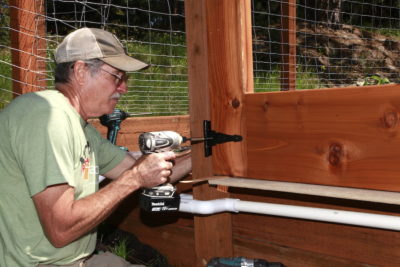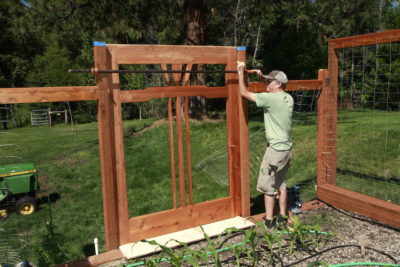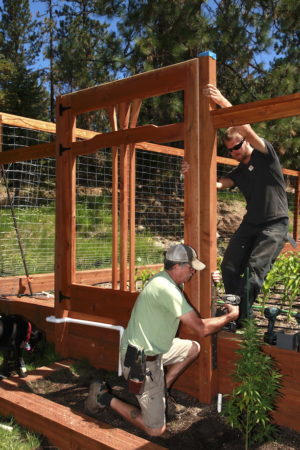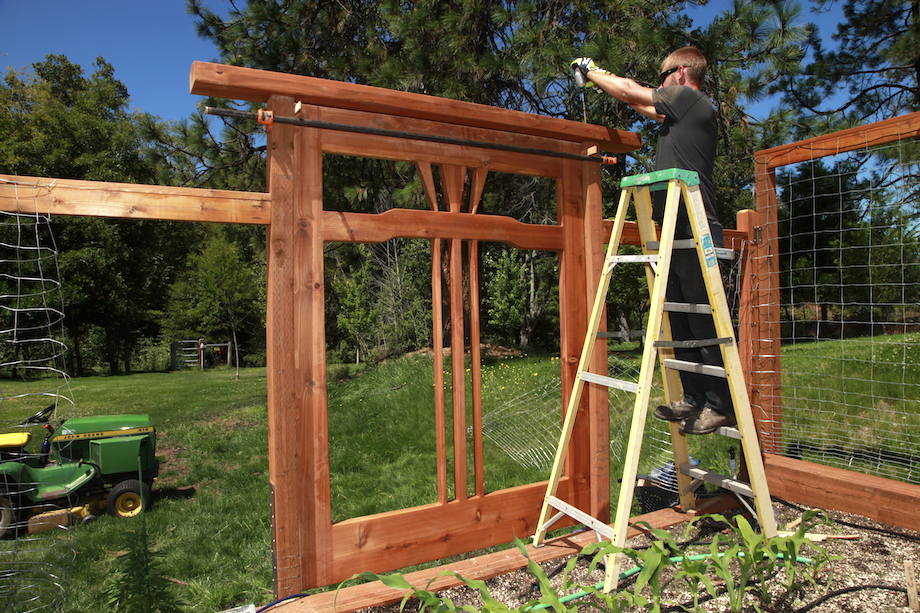Like every part of my new home in Southern Oregon, I wanted the garden fence and gates to reflect the architectural style I enjoy the most—the craftsman style that I learned to love while living in California, surrounded by bungalows and Greene and Greene homes.
I can’t count how many times I’ve visited the Gamble House in Pasadena and the Thorsen House in Berkeley, among others. Viewing those homes is like eating almonds…you just can’t eat enough of ‘em.
A few years ago, I built the front gates incorporating the same style, mimicking a gate from the Thorsen House.
Along the way, I discovered a valuable lesson: the cloud lift design is not meant to be symmetrical—the upper and lower curves of the lift shouldn’t be stacked directly plumb on top of each other. Look at any example from nature, like a tree branch or a human bone, and you’ll quickly discover that nothing is perfect, nothing is straight—in fact, there isn’t a straight bone in the human body.
Unfortunately, when Todd Murdock and I designed the garden gates, we hadn’t ‘evolved’ our understanding of the cloud lift; only later, while designing my shower door and Murphy bed, did we learn from past experience, designing the cloud lift in a more natural and organic way. The difference might be subtle to the eye, but it sure isn’t to the hand: when you cut this pattern, ease the edges, and sand it smooth, it doesn’t feel like a post-to-post handrail with mitered joinery; it feels like an over-the-top handrail where an easing slips down organically to a volute.
Watch this video and you’ll see and hear me talk a lot more (maybe too much!) about that organic feeling.
But building the gates was almost the easy part. The material I bought for the fence posts made hanging the gates a real challenge. The posts were all cedar, and they were center cut: in other words, they were cut from the pith of the tree—the eye or center of the growth rings. The moisture content was high, too, at about 16%. As the posts dried, they twisted and bowed…badly.
| The first task was straightening the posts. I started by making a series of kerf cuts, so that once the gates were swinging, I could adjust the gaps by straightening the posts where necessary. |   |
  |
Next I hung the gates on hinges, shimming the gates up off the raised garden. |
| Then I clamped the posts across the top, shimming between the gates and the hinge and strike posts, to make sure the gaps were even. |   |
Headers, with emphasized horizontality (extended projection or length), helped lock the posts in their permanent position.
Of course, if you know me, I wasn’t going to stop there. I had other details I wanted to include, too.
We installed Thorsen-style lightning bolts (another organic design!) at each corner, pinning the bottom of each lightning bolt with a domino, and fastening the top with a coated screw.
Waterfall brackets (thanks to Darrell Peart for that terminology!) punctuated the headers—another organic detail. And…I couldn’t resist…I had to turn something on the lathe, too, so I added the decorative corners.









